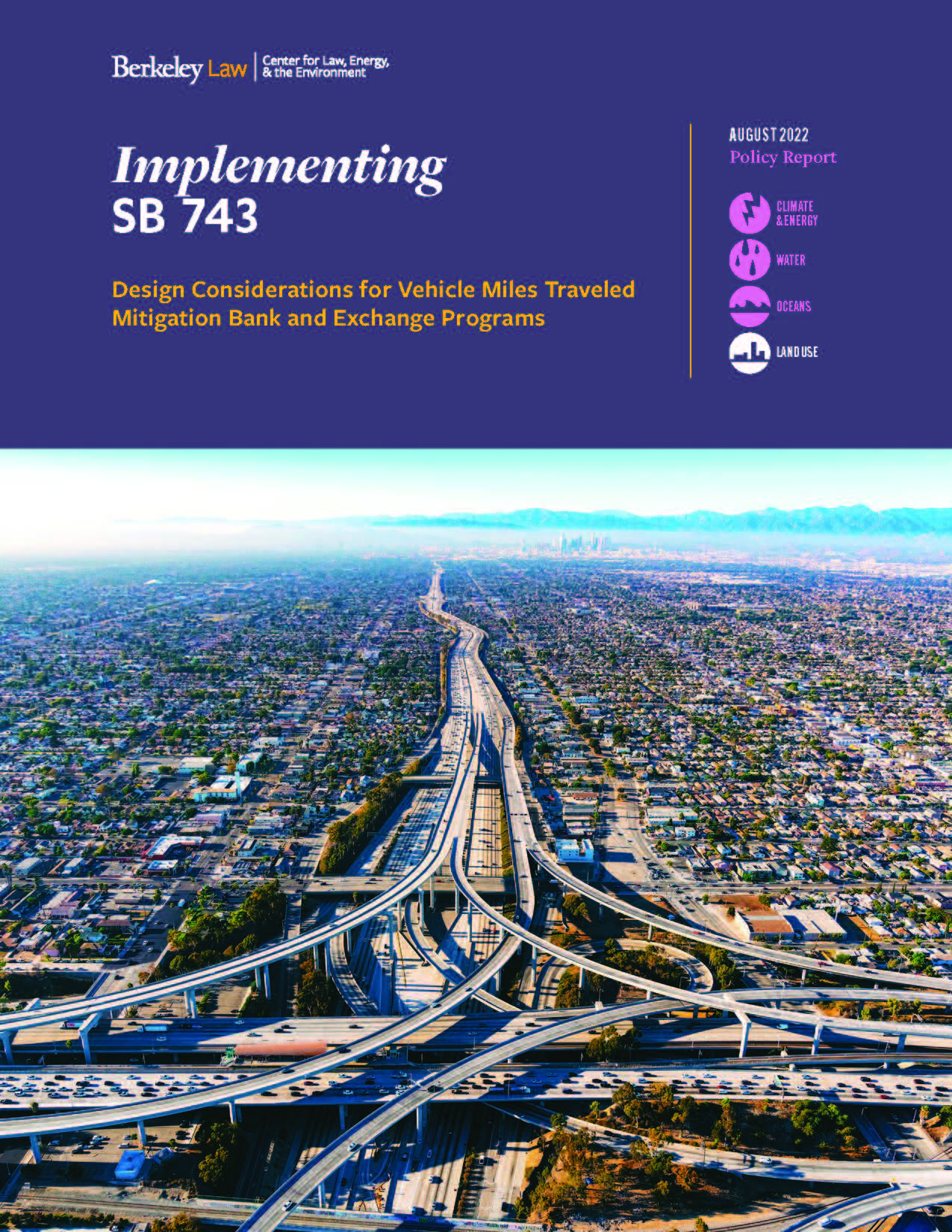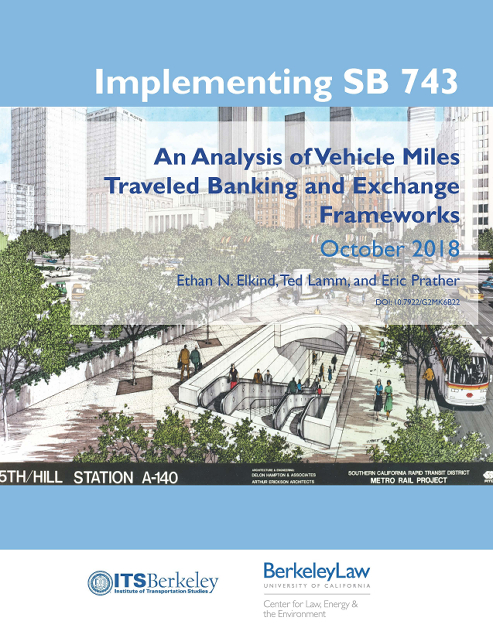 Under the California Environmental Quality Act (CEQA), government agencies and developers are required to mitigate (where feasible) the environmental impacts of new discretionary projects, including impacts to transportation. Traditionally, transportation impacts were evaluated in terms of level of service, which focuses on roadway congestion.
Under the California Environmental Quality Act (CEQA), government agencies and developers are required to mitigate (where feasible) the environmental impacts of new discretionary projects, including impacts to transportation. Traditionally, transportation impacts were evaluated in terms of level of service, which focuses on roadway congestion.
Senate Bill 743 (Steinberg, 2013) called for a new transportation impact measure that promotes greenhouse gas (GHG) emission reduction and multimodal transportation. In 2018 state leaders updated the CEQA guidelines to recommend VMT as the preferred impact measurement. VMT focuses on total vehicle trip-miles generated by a new project regardless of where they occur or how much traffic they cause.
Mitigating VMT impacts of new projects creates the opportunity—and potentially the need—to conduct mitigation at locations other than the development site. If properly conducted, offsite mitigation could maximize flexible and locally appropriate transit, active transportation, and density investments. To carry it out, CLEE and others have proposed “bank” and “exchange” programs to manage these capacities.
Our new report, Implementing SB 743: Design Considerations for Vehicle Miles Traveled Bank and Exchange Programs advances these proposals with a set of recommendations for state agencies like Caltrans (the state agency most likely to be responsible for VMT-inducing projects) and local governments to develop bank and exchange programs that build on their existing environmental mitigation efforts. Recommendations include:
- A state-level program for state agencies to manage mitigation and select locally appropriate investments, likely based on collaboration between Caltrans and other state transportation and land use agencies
- Regional-level programs for local and regional agencies to manage mitigation flexibly and efficiently within appropriate geographic limitations—likely managed by Metropolitan Planning Organizations or Regional Transportation Planning Agencies, but potentially run by large cities or counties in some cases
- Frameworks for analyzing the “additionality” of VMT mitigation investments to ensure that bank and exchange program funds support VMT reductions beyond those that would have occurred anyway
- Strategies for defining equity in the context of VMT mitigation and integrating equity into the decision-making of a bank or exchange program
The strategies outlined in the report should help inform the decisions that Caltrans and local government leaders across the transportation and land use spheres are making to advance the VMT reduction efforts initiated by the legislature nearly a decade ago.
Download the new report:
Implementing SB 743: Design Considerations for Vehicle Miles Traveled Bank and Exchange Programs (August 2022)
Download the 2018 report:
Implementing SB 743: An Analysis of Vehicle Miles Traveled Banking and Exchange Frameworks (October 2018)
Webinar (2018):
Hosted by CLEE’s Ethan Elkind and Ted Lamm, and featuring Senior Planner Chris Ganson and Senior Counsel Jeannie Lee of the Governor’s Office of Planning and Research.
Contact Ted Lamm, Katie Segal, or Ethan Elkind for more information.